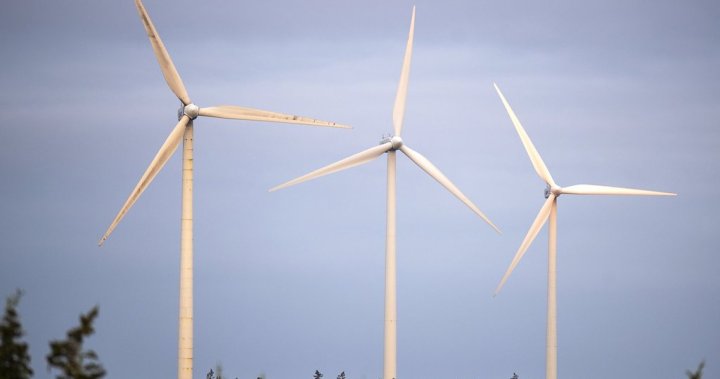The Atlantic winds that sweep across Nova Scotia’s coastlines have always been powerful. But these days, they’re carrying something new: unexpected economic opportunity.
Standing at the edge of the Fundy Ocean Research Center for Energy near Parrsboro, I watch as engineers prepare to test a new turbine design. The bay’s famous tides create perfect conditions for energy innovation, but it’s the political winds from south of the border that have recently energized Nova Scotia’s renewable sector.
“We’ve seen interest triple since November,” says Marion Campbell, operations director at WindForce Atlantic, a mid-sized turbine manufacturer based in Halifax. “American companies are looking north, and they’re bringing investment with them.”
Campbell’s experience reflects a surprising reality: former U.S. President Donald Trump’s well-documented disdain for wind energy is paradoxically benefiting Canadian renewable firms, particularly those in Nova Scotia.
Trump’s anti-wind rhetoric dates back years. During his first term, he claimed windmills cause cancer, kill birds, and destroy property values. At a rally just last month, he doubled down, calling turbines “environmental disasters” and promising to roll back federal supports if re-elected.
This persistent negativity, combined with uncertainty about U.S. policy direction, has pushed American renewable companies to diversify geographically. Nova Scotia, with its established wind sector and progressive energy policies, has become an attractive haven.
“It’s not that they’re abandoning the U.S. market,” explains Dr. Catherine Abreu, climate policy researcher at Dalhousie University. “They’re hedging their bets by establishing Canadian operations that can thrive regardless of U.S. policy shifts.”
Nova Scotia’s wind energy capacity has grown steadily over the past decade. According to Nova Scotia Power, wind now generates approximately 13% of the province’s electricity, with ambitious targets to reach 80% renewables by 2030.
The industry employs over 1,200 people directly, according to data from Clean Energy Canada, with thousands more in related services. What’s changing now is the influx of expertise and capital from concerned American firms.
Last month, Texas-based Horizon Wind Partners announced a $187 million investment in manufacturing facilities near Truro. The company explicitly cited “regulatory uncertainty” in the U.S. as a factor in their decision to expand Canadian operations.
When I visited their newly acquired industrial site last week, workers were already renovating the former textile mill. The company plans to hire 120 employees by year’s end.
For communities like Truro, still recovering from economic shifts that saw traditional industries decline, these investments offer new hope.
“My father worked in the old mill for thirty years before it closed,” says Jamie McIsaac, now training to join Horizon’s production team. “I never thought I’d have the chance to work in manufacturing here. Most of my friends had to go west.”
Beyond manufacturing, research partnerships are flourishing. Nova Scotia Community College has expanded its wind technician program in response to industry demand, while the province’s universities report increased collaboration with American renewable firms seeking stable research environments.
“We’ve welcomed three visiting scholars from U.S. institutions this semester alone,” notes Dr. Maria Gonzalez of Cape Breton University’s Sustainable Energy Center. “They bring expertise and connections that strengthen our programs.”
The trend extends beyond wind to the broader renewable sector. Solar installers, battery storage developers, and grid modernization companies report similar upticks in cross-border investment.
For Indigenous communities, the shift presents both opportunities and challenges. Several Mi’kmaq-owned enterprises have formed partnerships with incoming firms, but concerns about consultation and benefit-sharing remain.
“We’re cautiously optimistic,” says Sarah Bernard, economic development officer with Millbrook First Nation. “These new partnerships could advance economic reconciliation if structured properly, but we’ve learned to be vigilant about protecting our interests.”
Provincial officials have moved quickly to capitalize on the trend. Nova Scotia’s trade representatives have attended renewable energy conferences across the northeastern United States, emphasizing the province’s stable policy environment and skilled workforce.
Not everyone sees the development as positive, however. Some environmental advocates worry that rapid industry growth could lead to corners being cut on environmental assessments or community consultation.
“We support renewable energy, but not at any cost,” says Christopher Dexter of the Nova Scotia Environmental Network. “These projects still have ecological footprints that must be managed responsibly.”
Energy economists also caution that Nova Scotia’s windfall may be temporary. If U.S. federal policy stabilizes under future administrations, the current flow of investment could reverse.
“Political risk drives investment decisions, but those same decisions can be unmade when the risk profile changes,” warns economist Jennifer MacLeod. “Communities should plan for sustainability beyond this current boom.”
As the sun sets over the Fundy shoreline, turning turbine blades into silhouettes against the darkening sky, the irony isn’t lost on those working here: a politician who once claimed wind turbines decrease property values may be inadvertently increasing the value of Nova Scotia’s renewable economy.
For now, the province is catching the wind that Trump’s rhetoric has stirred up, transforming political turbulence into economic opportunity—one turbine at a time.






